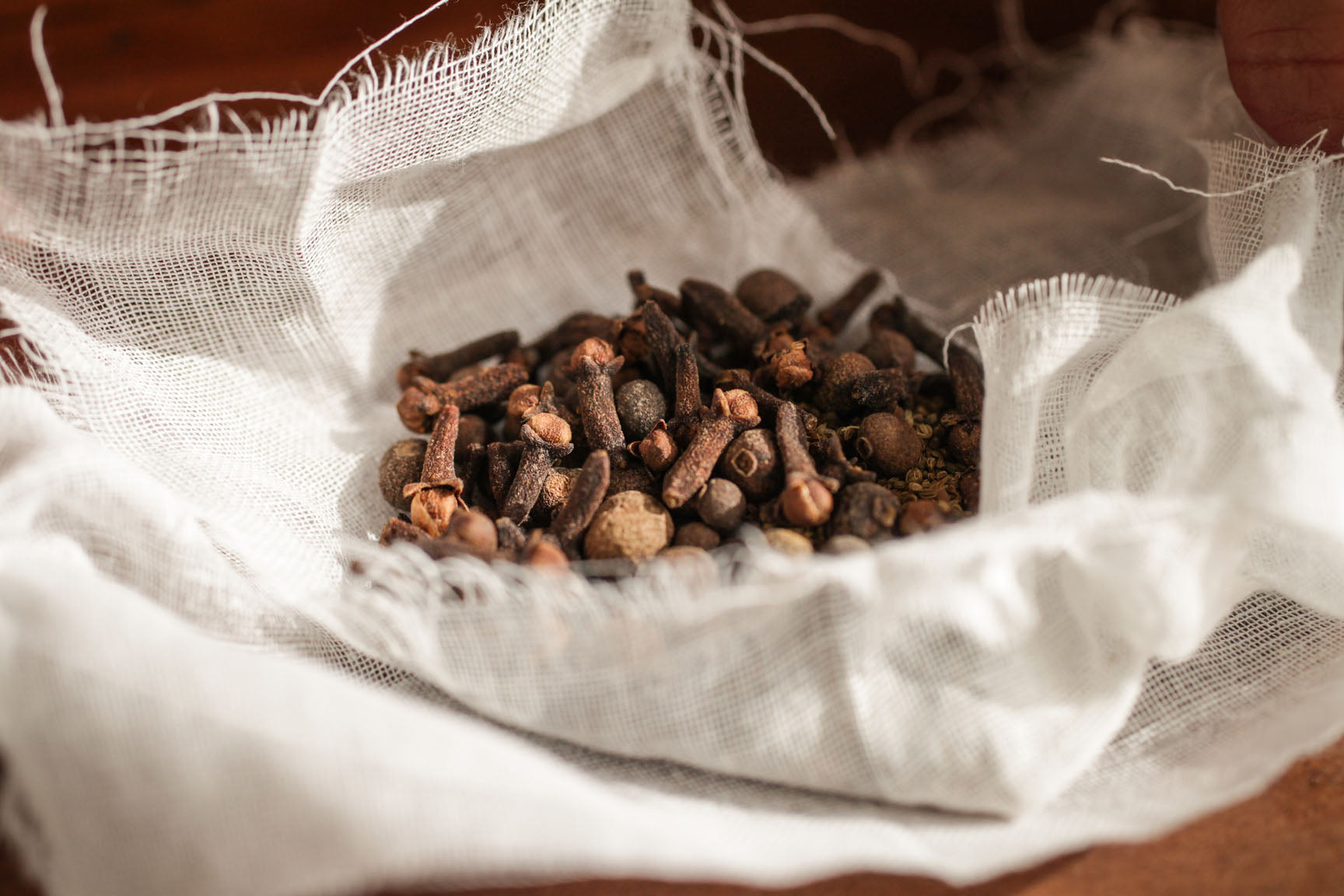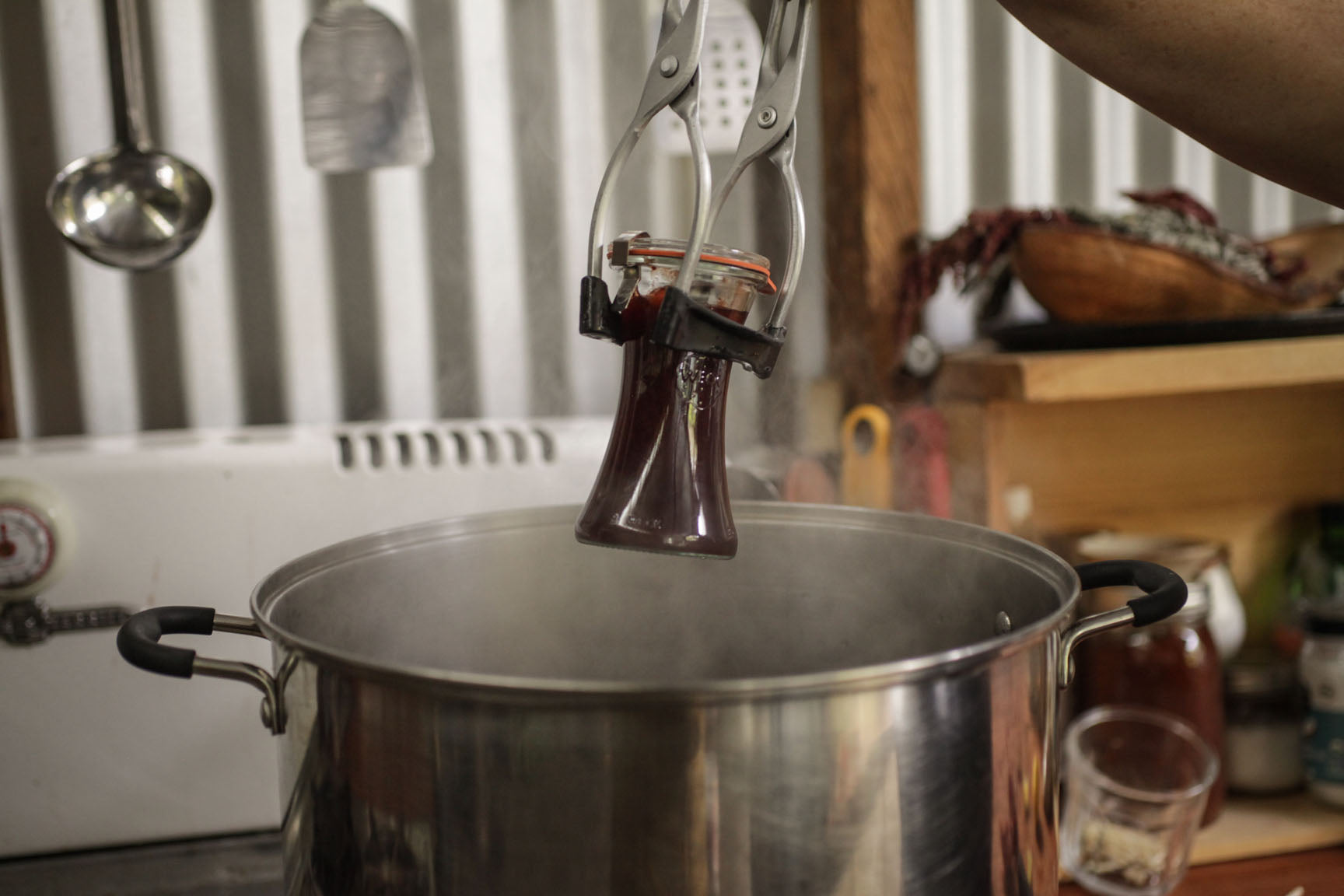- Continue Shopping
- Your Cart is Empty
Cranberry Ketchup

Imagine a ketchup just a bit richer and redder than that made from tomatoes. Just a touch rosier, and thicker, too, because the pectin-rich seeds in the cranberries thicken and enrich the sauce. We didn’t have to imagine it for long, staring at the recipe in Marissa McClellan’s “Food in Jars: Preserving in Small Batches Year-Round,” before we decided to give it a try. We were charmed, especially since we have a few friends who don’t eat tomatoes for allergy reasons. We had no idea, though, that it would be quite so lovely. The flavor is delicious, tart and sweet, familiar and yet…different. It’s tempting to lick the spoon, after spreading it on a sandwich, and to think deeply about that difference, and history, and the way things change and grow and stay the same. A philosophical kind of ketchup.
Once upon a time, you know, ketchup was made with all manner of ingredients, from oysters to walnuts to anchovies to mushrooms. It originated in China or Vietnam, as the story goes, where it was a fermented fish sauce known as ke-tsiep. Carried by traders through southeast China, it became a staple there, and was gradually carried to Malayasia and Indonesia, where it was known as kechap and ketjap, respectively. English traders picked it up in the 17th century, and carried it back to England. At this point, it still resembled something more like a Worcestershire sauce, but when ketchup, or catsup, came to America, the New World tomato fruits proved to be a wonderful base for the sauce, and ketchup became sweeter and redder, made with the ripe tomato fruits, sugar, and spices like allspice, cinnamon, cloves, and ginger. Heinz is responsible for the transformation of “tomato ketchup,” as it was first labelled, to the pantry staple “ketchup.” Still, though it’s been made in America with tomatoes for generations, we like to remember its colorful past, and contemplate the possibility that at any moment, ketchup, like global trade patterns, might undergo another radical transformation.
Enter the American cranberry, red as a tomato, but seedier, tarter, and containing twice as much pectin. Ketchup is all shook up.
We won’t tell you that you’ll prefer this ketchup to the familiar staple of tomato ketchup. We won’t make any promises. We just invite you, now as always, to consider the possibilities.
Sunlight shines on a sandwich. The ruby condiment glistens.
If you are not familiar with the water bath canning method watch our water bath canning video workshop. Always make sure you are following all safety guidelines outlined by the USDA when canning anything
Ingredients
4 pounds fresh cranberries2 1/2 cup chopped yellow onion (about 2 medium onions)
4 cups water
2 cups apple cider vinegar
4 cups lightly packed light brown sugar
1 tablespoon salt
1 teaspoon freshly ground black pepper
1 tablespoon whole cloves
2 cinnamon sticks
1 tablespoon allspice berries
1 tablespoon celery seed
Method
Prepare a boiling water bath canner and appropriately sized jars. This recipe makes 6 half-pint jars, but we used an assortment of shapely Weck jars, a further, if unintentional, nod to the trans-Atlantic history of a beloved condiment. Anyhow, set the water in the canner to boiling, and put the jars in the water, to let them come to a boil and then a low simmer as you prepare the rest of the recipe.
Combine the cranberries, onions, and 4 cups water in a large pot. Bring to a boil, then reduce the temperature to medium and cook until the cranberries pop and the onions are soft enough to put through a food mill. About 25 minutes.

Position a food mill with a small plate over a clean pot or bowl, and press the cranberries and onions through.  Discard (compost) the skins and seeds, and return the mixture to the pot.
Discard (compost) the skins and seeds, and return the mixture to the pot.  Add the cider vinegar, brown sugar, salt, pepper, and cinnamon sticks to the pot.
Add the cider vinegar, brown sugar, salt, pepper, and cinnamon sticks to the pot.  Combine the remaining spices in a spice bag, mesh ball, or a well-secured twist of cheesecloth, and drop them into the pot.
Combine the remaining spices in a spice bag, mesh ball, or a well-secured twist of cheesecloth, and drop them into the pot. Simmer over medium-low heat, stirring regularly, until the mixture is quite thick, about half an hour.
Simmer over medium-low heat, stirring regularly, until the mixture is quite thick, about half an hour. When the ketchup is finished cooking, remove the spice bag and cinnamon and discard. Ladle the ketchup into prepared jars, leaving 1/2” headspace. Wipe the rims, apply the lids and rings or clips if using, and process in a boiling water bath for 10 minutes.
When the ketchup is finished cooking, remove the spice bag and cinnamon and discard. Ladle the ketchup into prepared jars, leaving 1/2” headspace. Wipe the rims, apply the lids and rings or clips if using, and process in a boiling water bath for 10 minutes. Use it! Dilute it in a vinaigrette, or spread it on sandwiches in addition to or in place of mustard.
Use it! Dilute it in a vinaigrette, or spread it on sandwiches in addition to or in place of mustard.

If you are not familiar with the water bath canning method watch our water bath canning video workshop. Always make sure you are following all safety guidelines outlined by the USDA when canning anything
